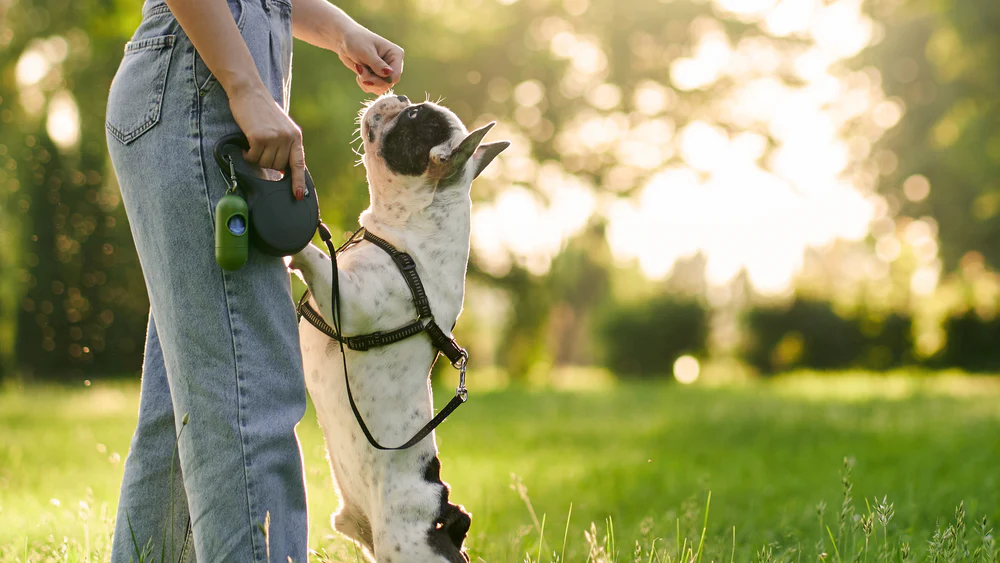
ESSENTIAL DOG TREATS & TRAINING TIPS EVERY DOG OWNER SHOULD KNOW
Share
Training your dog can be a fun and rewarding experience, but using the right treats and methods can make it even better. Here are some simple tips to help you train your dog effectively and keep them happy during the process.
1. Choose the Right Treats for Training
Not all treats are good for training. Choose small, soft, and tasty treats that are easy for your dog to eat quickly. This helps your dog stay focused without getting too full. Quick rewards keep your dog excited and ready to learn.
Pro Tip: Pick low-calorie treats that taste good but won’t make your dog gain weight, keeping them healthy and energetic.
2. Match Treats to the Task
Not every task deserves the same level of reward. For basic commands like “sit” or “stay,” you can use simple treats. But for harder tasks or new tricks, use high-value treats like pieces of chicken or freeze-dried meat to encourage your dog to work harder.
Pro Tip: Save the high-value treats for more difficult tasks. This will keep your dog motivated to learn new things.
3. Timing is Everything
The timing of your rewards is very important. You need to give your dog a treat right after they do the right thing. If you wait too long, your dog might not understand why they are getting the treat.
Pro Tip: Always have treats ready before you start. Reward your dog within seconds of them doing something right.
4. Praise and Affection Matter
Treats are great, but praise and affection are just as important. Say things like “Good boy!” or “Well done!” and give your dog some love along with the treat. This makes training a more positive and enjoyable experience for your dog.
Pro Tip: Mix treats with praise and affection. This helps your dog not to rely only on food for rewards.
5. Use a “No Reward” Marker
It’s just as important to show your dog when they are doing something wrong. A gentle “uh-uh” or a head shake can tell your dog that they need to try again. This isn’t punishment, just a way to help them learn.
Pro Tip: Keep your voice calm and neutral when telling your dog they made a mistake. This will help them learn without feeling scared.
6. Training Opportunities Are Everywhere
Training doesn’t have to happen only in special sessions. You can practice commands during walks or even at home. This helps your dog learn how to follow commands in different situations and with distractions around them.
Pro Tip: Use daily activities like feeding or going outside as chances for quick training sessions.
7. Short and Sweet Training Sessions
Dogs can get tired of long training sessions. Keep your training sessions short—around 5 to 10 minutes at a time. This helps your dog stay focused and excited to learn.
Pro Tip: Break up training into short sessions throughout the day to keep your dog interested and avoid tiring them out.
8. Training Should Be Fun and Engaging
Training isn’t just about teaching your dog commands; it’s also about having fun together. Play games like fetch or tug-of-war to make training more enjoyable and bond with your dog.
Pro Tip: Mix training with play. After a few commands, reward your dog with a fun game to keep them excited.
9. Gradually Reduce Treats Over Time
At first, it’s important to reward your dog with treats every time they do something right. But as your dog learns, you can start using treats less often and use praise, toys, or games instead.
Pro Tip: Give treats at random times so your dog stays excited and keeps guessing when they will get a reward.

Conclusion
Training your dog takes time, patience, and consistency. By using the right treats, rewarding at the right time, and mixing in praise and fun, you can help your dog learn faster and enjoy the process. Keep training sessions short and fun, and watch your dog grow into a happy, well-behaved pet!
Happy training! 🐾
